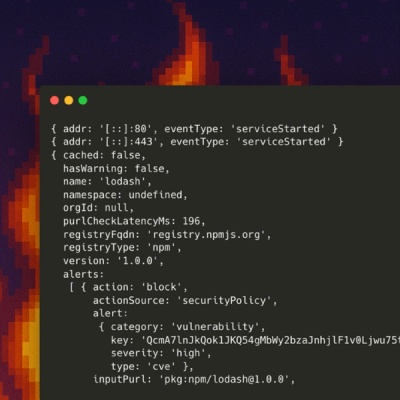
Research
/Security News
10 npm Typosquatted Packages Deploy Multi-Stage Credential Harvester
Socket researchers found 10 typosquatted npm packages that auto-run on install, show fake CAPTCHAs, fingerprint by IP, and deploy a credential stealer.

| Build status | |
|---|---|
| Linux | |
| OSX (OpenMP disabled) | |
| Windows (OpenMP disabled) |
LightFM is a Python implementation of a number of popular recommendation algorithms for both implicit and explicit feedback, including efficient implementation of BPR and WARP ranking losses. It's easy to use, fast (via multithreaded model estimation), and produces high quality results.
It also makes it possible to incorporate both item and user metadata into the traditional matrix factorization algorithms. It represents each user and item as the sum of the latent representations of their features, thus allowing recommendations to generalise to new items (via item features) and to new users (via user features).
For more details, see the Documentation.
Need help? Contact me via email, Twitter, or Gitter.
Install from pip:
pip install lightfm
or Conda:
conda install -c conda-forge lightfm
Fitting an implicit feedback model on the MovieLens 100k dataset is very easy:
from lightfm import LightFM
from lightfm.datasets import fetch_movielens
from lightfm.evaluation import precision_at_k
# Load the MovieLens 100k dataset. Only five
# star ratings are treated as positive.
data = fetch_movielens(min_rating=5.0)
# Instantiate and train the model
model = LightFM(loss='warp')
model.fit(data['train'], epochs=30, num_threads=2)
# Evaluate the trained model
test_precision = precision_at_k(model, data['test'], k=5).mean()
Please cite LightFM if it helps your research. You can use the following BibTeX entry:
@inproceedings{DBLP:conf/recsys/Kula15,
author = {Maciej Kula},
editor = {Toine Bogers and
Marijn Koolen},
title = {Metadata Embeddings for User and Item Cold-start Recommendations},
booktitle = {Proceedings of the 2nd Workshop on New Trends on Content-Based Recommender
Systems co-located with 9th {ACM} Conference on Recommender Systems
(RecSys 2015), Vienna, Austria, September 16-20, 2015.},
series = {{CEUR} Workshop Proceedings},
volume = {1448},
pages = {14--21},
publisher = {CEUR-WS.org},
year = {2015},
url = {http://ceur-ws.org/Vol-1448/paper4.pdf},
}
Pull requests are welcome. To install for development:
git clone git@github.com:lyst/lightfm.gitcd lightfm && python3 -m venv venv && source ./venv/bin/activatepip install -e . && pip install -r test-requirements.txt./venv/bin/py.test tests.lint-requirements.txt.pip install pre-commit
pre-commit install
When making changes to the .pyx extension files, you'll need to run python setup.py cythonize in order to produce the extension .c files before running pip install -e ..
FAQs
LightFM recommendation model
We found that lightfm demonstrated a healthy version release cadence and project activity because the last version was released less than a year ago. It has 1 open source maintainer collaborating on the project.
Did you know?

Socket for GitHub automatically highlights issues in each pull request and monitors the health of all your open source dependencies. Discover the contents of your packages and block harmful activity before you install or update your dependencies.

Research
/Security News
Socket researchers found 10 typosquatted npm packages that auto-run on install, show fake CAPTCHAs, fingerprint by IP, and deploy a credential stealer.

Product
Socket Firewall Enterprise is now available with flexible deployment, configurable policies, and expanded language support.

Security News
Open source dashboard CNAPulse tracks CVE Numbering Authorities’ publishing activity, highlighting trends and transparency across the CVE ecosystem.